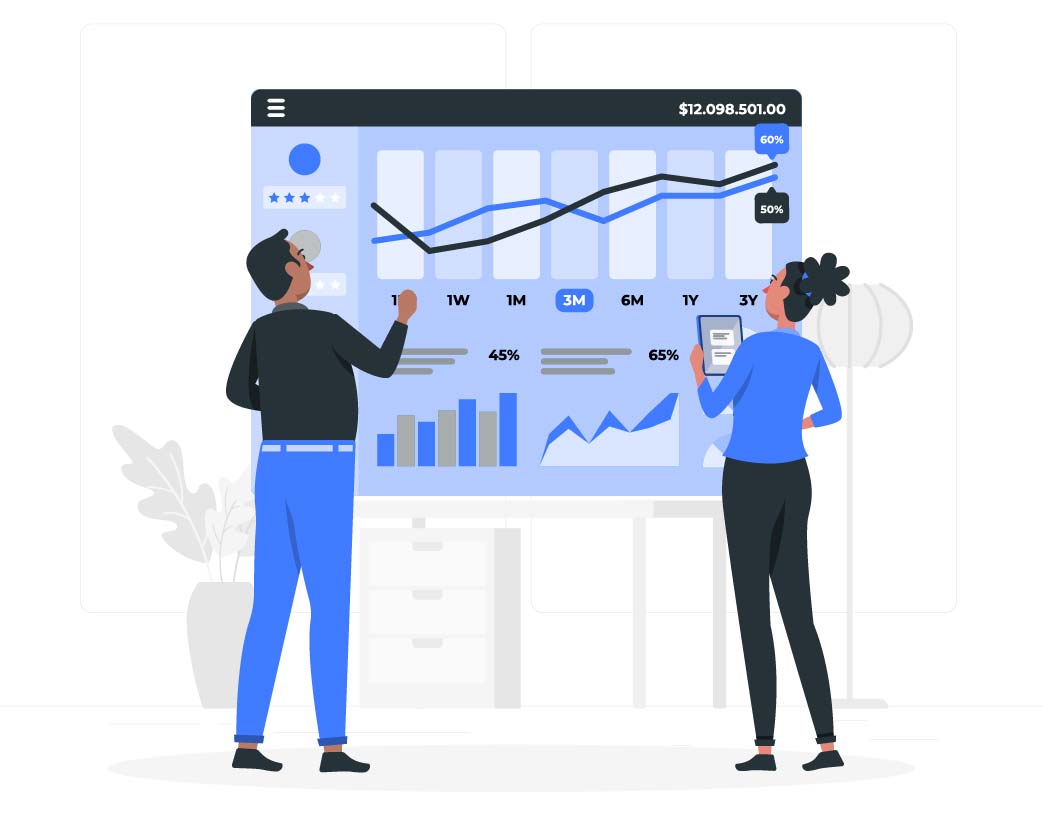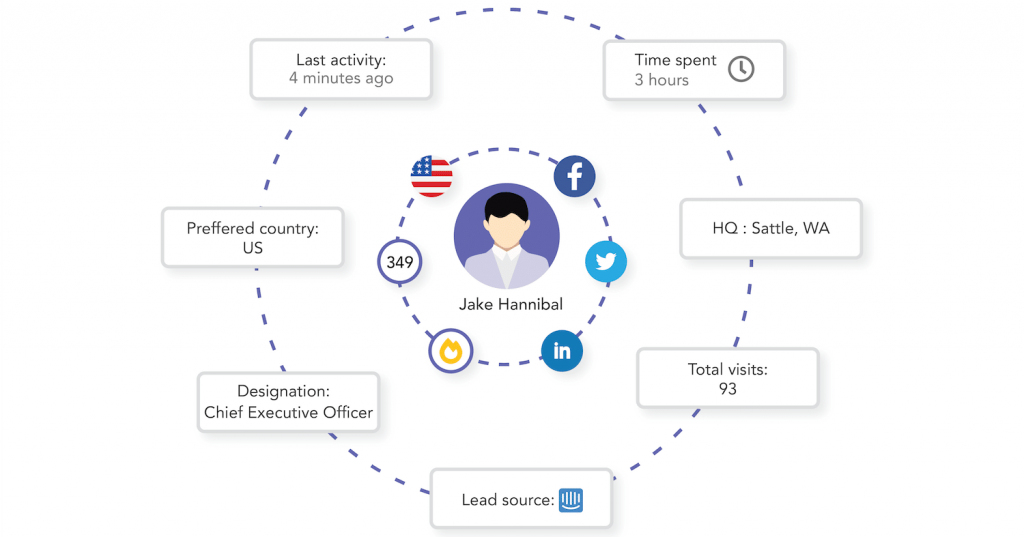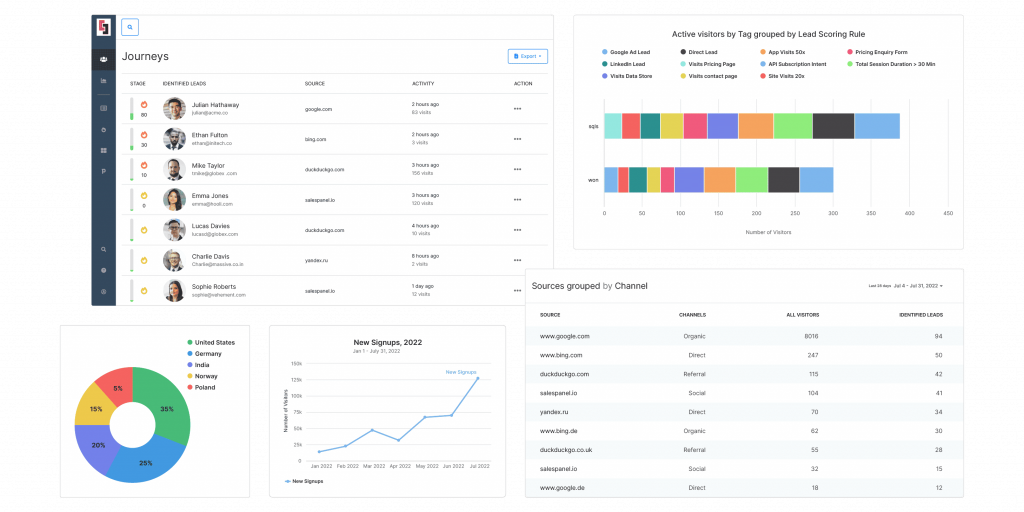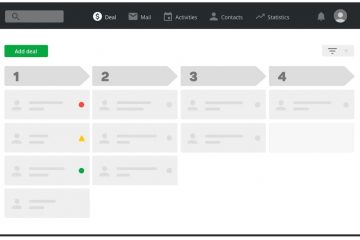Pipeline Velocity: How Do You Sell Faster?
Navigating the complex landscape of sales metrics, sales teams find themselves juggling various KPIs. Amid this sea of metrics, one of them indicates the overall health of your sales process and the trajectory towards predictable revenue – pipeline velocity.
In business, time equates to money. If your pipeline moves sluggishly or leads fail to convert into customers with the expected speed, you could be troubled by underperformance in your reports. This is where pipeline velocity comes to the rescue.
What is pipeline velocity? How do you measure pipeline velocity? How do you identify problems in your pipeline? We will breakdown everything in this article!
What Is Pipeline Velocity?

Pipeline velocity (also called sales velocity) refers to the speed at which leads or opportunities move through your sales pipeline. The velocity is measured from the initial contact to closing a deal.
This metric measures the efficiency and effectiveness of the sales process and on a granular level, it provides insights into the efficiency of lead progression. This allows businesses to pinpoint and alleviate bottlenecks and streamline the buyer journey for quicker conversions.
Calculating the Pipeline Velocity
We cannot talk about velocity without talking about… physics! And, where there is physics, there are formulas.
Here are the key components of the formula for pipeline velocity:
- Number of Opportunities (Open Pipeline Value): The total count of potential deals or opportunities in the sales pipeline.
- Average Contract Value: The average monetary value of each deal or opportunity.
- Win Rate: The percentage of opportunities that successfully convert into closed deals.
- Sales Cycle Length: The average time it takes for an opportunity to move from the initial contact to closing.

Example 1: An Average B2B SaaS Product (ADV usually < $2,000)
Assuming,
- Number of Opportunities: 200
- Average Deal Value: $1,500
- Win Rate: 18%
- Sales Cycle Length: 15 days

Thus, the pipeline velocity for the deals is $3,600. This means that, on average, $3,600 worth of deals move through the pipeline per day.
Example 2: An Average Enterprise SaaS Product (ADV usually > $50,000)
Assuming,
- Number of Opportunities: 110
- Average Deal Value: $60,000
- Win Rate: 30%
- Sales Cycle Length: 90 days

In this example, the pipeline velocity for Enterprise SaaS deals is $22,000. This indicates that on average, $22,000 worth of deals move through the pipeline per day.
These examples illustrate how pipeline velocity can vary based on deal values, win rates, and sales cycle lengths. Monitoring these metrics and adjusting strategies accordingly helps businesses optimize their sales processes for different deal sizes.
But is it really necessary and beneficial to track and manage pipeline velocity? Wondering what benefits justify the efforts? Let’s find out!
Why Do You Need to Track and Manage a Predictable Pipeline Velocity?
The short answer is that there are many benefits to making some additional efforts. Let’s take a deep dive into these benefits.
1. Enhanced Forecasting and Planning

A predictable pipeline velocity provides a foundation for accurate sales forecasting. This improved insight and understanding means businesses can forecast future sales and revenue with greater precision. As a result, businesses such as strategic planning, resource allocation, etc. benefit tremendously.
2. Improved Resource Optimization

Keeping track of pipeline velocity means you have a bird’s eye view of all the deals progressing through your pipeline. This allows you to close the fast-moving ones quickly and allocate more resources to close the high-value deals.
This strategic prioritization of deals helps businesses boost revenue and profits. All while allocating resources efficiently and ensuring the right leads are prioritized and engaged at the right time.
3. Identifying Bottlenecks

Imagine yourself on a weekend drive through the country. The weather is amazing, and so are the roads and your car but you keep hitting speed breakers. Sounds awful right?
Customers can come across similar experiences in their buyer’s journey. These very experiences stand in the way of your business and profits and can delay closing of deals. Thankfully, monitoring pipeline velocity enables you to highlight such bottlenecks and stall points.
Corrective actions can then be undertaken to eliminate any points of friction in the buyer’s journey and to speed up the sales cycle.
4. Sales Process Improvement

Monitoring and tracking pipeline velocity enables you to compare the effectiveness of your sales process to that of your industry. If your pipeline velocity isn’t greater than your industry’s, you can test and adopt different sales strategies to speed up the cycle.
This approach of insight-driven continuous improvements ensures that the sales process evolves to meet the changing needs of the market and customers.
5. Aligning Sales and Marketing

It is imperative for the sales and marketing teams to be on the same page and working together and a predictable pipeline velocity can deliver that.
The insights generated via monitoring and tracking pipeline velocity can help marketers target and generate better matching high-quality leads.
The same insights and improvements will then enable the sales team to move opportunities through the pipeline quickly and finalize sales. This alignment is crucial for achieving shared goals and maximizing the impact of joint efforts.
6. Customer Experience Optimization

About 75% of the customers agree that customer experience heavily impacts their buying decisions. Knowing this fact and insights into the customer journey via monitoring and tracking pipeline velocity should allow you to deliver the best customer experience.
By tailoring your communication, engagement, and support strategies based on the typical journey, you enhance customer satisfaction and build stronger relationships.
Strategies To Improve Pipeline Velocity
Improving pipeline velocity involves optimizing various stages of the sales process to accelerate the movement of leads through the pipeline. Here are some top strategies to enhance pipeline velocity:
Define and Understand Your Ideal Customer Profile (ICP)
Clearly define your Ideal Customer Profile to target leads that are more likely to convert quickly. Understand the characteristics, pain points, and buying behaviors of your ideal customers to tailor your approach.
Implement Lead Scoring
Use lead scoring to prioritize and focus efforts on leads with the highest potential for conversion. Assign scores based on demographics, behavior, and engagement to identify hot leads that are ready to move through the pipeline.

Streamline the Sales Process
Identify and eliminate bottlenecks in the sales process by streamlining workflows and reducing unnecessary steps. Ensure that sales teams have the tools and resources they need to move deals forward efficiently.
Feedback Loops
Establish feedback loops between sales and marketing teams and gather insights from customer interactions. Use feedback to refine strategies, address pain points, and continuously enhance the customer journey.
Gamification of Sales
Introduce gamification elements to the sales process, turning it into a friendly competition. Create challenges, leaderboards, and rewards to motivate the sales team and drive healthy competition.
Personalization at Scale
Every customer wants to feel special but doing it manually isn’t possible. Hence, try to incorporate artificial intelligence to personalize sales interactions. Use AI algorithms to analyze customer data and provide personalized recommendations.
Interactive Content Experiences
A B2B buyer’s journey is pretty mundane. If you can make it fun, you will decimate your competition. Use interactive content such as calculators, assessments, or virtual product demos to create a more immersive and memorable experience for potential customers.
Can Salespanel help with Pipeline Velocity? Absolutely!
Salespanel is primarily a behavioral tracking solution. So, how does it help with pipeline velocity?
Our product analyzes buyer behavior to notify your reps when qualified lead show buying intent. It starts by identifying accounts that visit your website, helping you identify target accounts even before they sign up. Then, it analyzes behavior to establish buying intent.
All the behavioral data can be fed to your CRM and your reps can be assigned to leads who perform specific actions or have specific characteristics.
This proactive approach empowers your team to predictably expedite the pipeline, swiftly advancing deals to the next stages whenever opportunities arise, ultimately amplifying pipeline velocity.
Salespanel also helps your team segment and score leads based on profile and behavioral traits to further refine the process and your goal towards predictable revenue.
Want to try it out? Take our 14-day free trial or schedule a demo!

Sell more, understand your customers’ journey for free!
Sales and Marketing teams spend millions of dollars to bring visitors to your website. But do you track your customer’s journey? Do you know who buys and why?
Around 8% of your website traffic will sign up on your lead forms. What happens to the other 92% of your traffic? Can you identify your visiting accounts? Can you engage and retarget your qualified visitors even if they are not identified?



